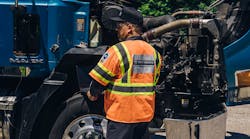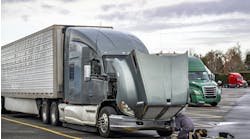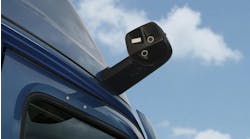No one wants their tractor-trailer put out-of-service (OOS) for a vehicle violation following a roadside inspection. But as a paraphrase of the great poet Robert Burns illustrates, “even the best-laid plans of mice and men go awry,” and for that reason you need a plan already in place to figure out how to correct an OOS vehicle violation in order to get your rig back on the road.
That’s the advice of Homer Hogg, manager of technical development at TravelCenters of America (TA) truck service, and he knows of what he speaks.
Before his first stint at TA that began back in 1982, Hogg worked his way up from truck technician to master technician and then to director of maintenance training and quality control at a national trucking company. He returned to TA in 2010 and helped finish cementing together TA’s truck equipment service operations with that of fellow truck stop chain Petro Stopping Centers, which merged together in 2007 to form TA-Petro.
Below, Hogg offers some advice on how fleets should deal with an OOS situation that leaves a tractor-trailer stuck on the side of the road in need of repairs.
OK, a fleet’s tractor-trailer just got placed OOS during a roadside inspection. What’s needed to get the vehicle back up and running? How do you help your driver in this situation?
The more specific your driver is in telling you about the problems cited by the inspector, the better prepared a servicing technician will be when they arrive to repair the vehicle. Be sure to communicate the exact CFR, short for “code of federal regulations,” to the service provider before they are dispatched. This code can be very helpful to a technician who is preparing to go offsite to make the repair.
You also want to be sure to provide any position information about the repair, such as whether it’s at the left rear or right front of the vehicle. Note that many parts on a vehicle are side-specific; therefore, communicating the details up front could save the technician another trip back to pick up parts and the customer’s precious uptime.
Because several truck systems are dependent on one another, a driver that is willing to look harder at their vehicle could save money and time. For example, the windshield wipers may not be operating, which could be due to an electrical problem with the alternator. Many truck systems are dependent on computers which are, in turn, dependent on voltage. When the voltage gets low enough, computers cease to operate properly or stop operating completely, so any system that does not operate properly could be a result of low voltage from the charging system or batteries.
Let the servicing facility know of any problem you’ve experienced recently with the vehicle. This type of information can make all the difference.
Unexpected roadside service calls are expensive enough, but then you throw in the “emergency” nature of an OOS repair and costs can really skyrocket. How can fleets deal with such situations?
You want to be sure you plan for roadside repairs. I hope one day vehicles will run from one scheduled maintenance event to another without a mechanical interruption, but I don’t see that happening in my lifetime, so it is certainly best to be prepared.
I use what I call the “one-10-100 rule” when dealing with these situations. It simply states that if you can get your vehicle inspected at the correct interval and make the necessary repairs, you will be running your maintenance cost in the $1 range.
But, if during the inspection the technician identifies that repairs are necessary and the owner decides to defer those repairs, you have moved up the scale to the $10 range.
Unfortunately, if the vehicle breaks down due to a lack of maintenance or a lack of repairing the identified defects, you’re now operating in the $100 range.
Now, those numbers are not literal, of course, but more comparative in nature to show that the best way to run a maintenance program is to schedule maintenance and get the identified items repaired in a timely manner.
What kind of paperwork or digital photos should a fleet have their driver collect to ensure an OOS repair is fixed properly?
The level of information or documentation necessary will be dependent on the nature of the repair. In some cases, pictures or a signed copy of the work order are sufficient, but in other situations, the domiciled maintenance shop may want the driver to bring the old components or parts back to them.
The best practice is for the driver to contact their fleet’s shop or breakdown department for specific instructions before they leave the scene of an OOS event and before the servicing technician leaves the scene. In some cases, the failed part may be covered by warranty, yet it’s required to be returned for full coverage.
What other advice or insight can you offer fleets about ensuring they have a solid ‘rapid response’ plan in case a truck is placed OOS due to a roadside inspection?
Some OOS citations will require a servicing location or provider to have specialized skills such as aluminum welding and sophisticated computer diagnostics.
This may not be too difficult Monday through Friday on during the day shift, but could tend to be very frustrating at night and on weekends.
So be diligent to maintain good relationships with service providers who have a wide array of skill sets needed to get your vehicles back on the road safely in the shortest amount of time.




